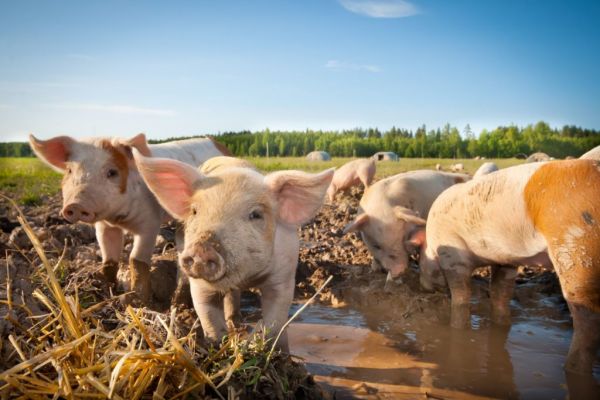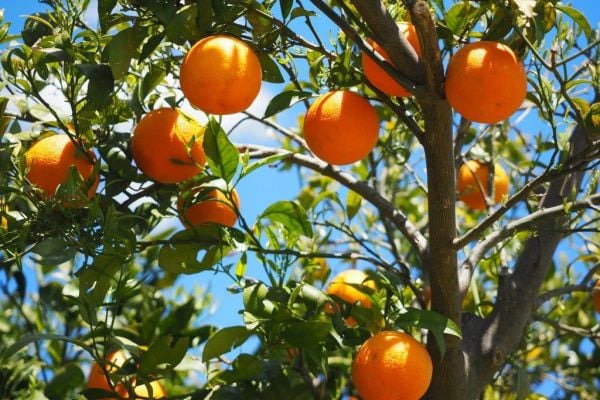The biggest pig breeders in China, consumer of fully half the world's pork, seem to have bitten off more than they can chew.
Big agribusinesses have elbowed their way into the sector and are rapidly modernising it, but have expanded pig herds so aggressively that, with demand now in a downturn, their hog prices are falling, losses are mounting, and debt is rising.
More huge losses are expected next year, putting China's pig enterprises under pressure to slim down their breeding herds and sell off farms, many of which are sitting empty.
For now, however, they are digging in, hoping to wait out the market downturn and reap a bonanza when prices eventually recover. And that is raising the stakes, not just for themselves but for their overseas feed suppliers, genetics firms, and the struggling global pork trade.
"It all comes down to how deep these companies' pockets are," said Lyle Jones, China sales director at US-based Genesus Inc, which supplies breeding pigs to the leading producers.
Pricing
Hog farming, like other Chinese sectors from homebuilding to electric vehicles, has in recent years prioritised growth and market share over profits, creating a surplus that has driven pig prices lower and is now crowding out imports.
China's cash hog prices have averaged well below even the most efficient producers' costs this year, for the first time in nearly a decade, and in the past three months alone have dropped 15% to 14.5 yuan per kilogram.
The most-active live hog futures DLH on the Dalian Commodity Exchange have tumbled 7.3% since the beginning of last week to 13,910 yuan ($1,949) per metric tonne, the lowest since they began trading almost three years ago.
The downdraft has defied both state efforts to prop up prices with token purchases for official reserves, and the start of the peak winter season for pork consumption.
And it is squeezing a number of big producers in the $200 billion-a-year industry, with the top 10 producers alone recording a 13% increase in net debt this year as of end-September, according to state-run media.
New Hope Liuhe, China's third-largest producer and the world's fifth largest, sold off farms last year and told investors in July it wanted to sell more, while bringing in strategic investors to its poultry and food units.
The company has made 'some progress' on those fronts, it told investors on Friday, but gave no details. It also said a 7.35 billion yuan private share issue announced on 30 November would help it to repay loans and rein in debt.
Major producers Tech-Bank and Fujian Aonong have been selling off stakes in themselves or in subsidiaries to raise cash, while Aonong's debt-to-equity ratio reached a hefty 8.26 in the third quarter according to LSEG data. Neither company responded to requests for comment about their current challenges and working capital requirements.
Expanding Debt
Jiangxi Zhengbang Technology, which became China's second-largest producer after a rapid expansion drive, was forced into a restructuring last year despite support from local government-run firms.
Moreover, with debt levels swelling across the Chinese economy, banks and local governments have become less willing or able to offer support.
"Over the past two years, banks could lend them a lot so these companies expanded very fast," said an analyst at an equity research firm, who was not authorised to speak to the media and declined to be named.
But now, especially given the companies' high debt levels, the analyst said, "It's hard for them to borrow any money from the banks."
Analysts say the biggest players – industry leader Muyuan Foods Co, a low-cost producer and one of the few generating cashflow, and No. 2 Wens Foodstuff Group Co, which has reduced costs significantly – may be well-positioned for a shake-out.
But challenges are mounting as China produces record volumes of pork, in part a legacy of past encouragement from Beijing, which fears food price volatility and urged a major expansion of sow herds after an African swine fever outbreak in the late 2010s killed half the country's pigs.
Muyuan alone has more than tripled its sow herd since 2018, chasing after market share along with other big publicly listed firms, and now has three times as many sows as WH Group, which owns top US producer Smithfield Foods.
Analysts at Hua'an Securities forecast that hog output would jump 10% in the first half of 2024. That follows a 17% surge in the first nine months of this year at China's 15 big market-listed breeders even as they reported 200 billion yuan in combined net losses.
To make matters worse, pork consumption in China has been hit both by slowing economic growth and by diners' changing preferences, as more health-conscious consumers – especially young people and urbanites – switch to poultry and other foods.
And the costs of battling disease have risen substantially, with African swine fever now endemic and a constant threat to all farms.
China's agriculture ministry has warned of heavier losses for the sector in early 2024 than a year ago and urged pig producers to cut output.
While the big producers have slashed spending on new equipment and taken other cost-cutting measures, most remain reluctant to unload idle farms and reduce breeding herds.
"Leading companies aggressively expanded in 2020-21, the capex was huge, and they're not willing to reduce capacity, even under the current weak price," said Flora Zhu, director of China Corporate Research at Fitch Ratings.














